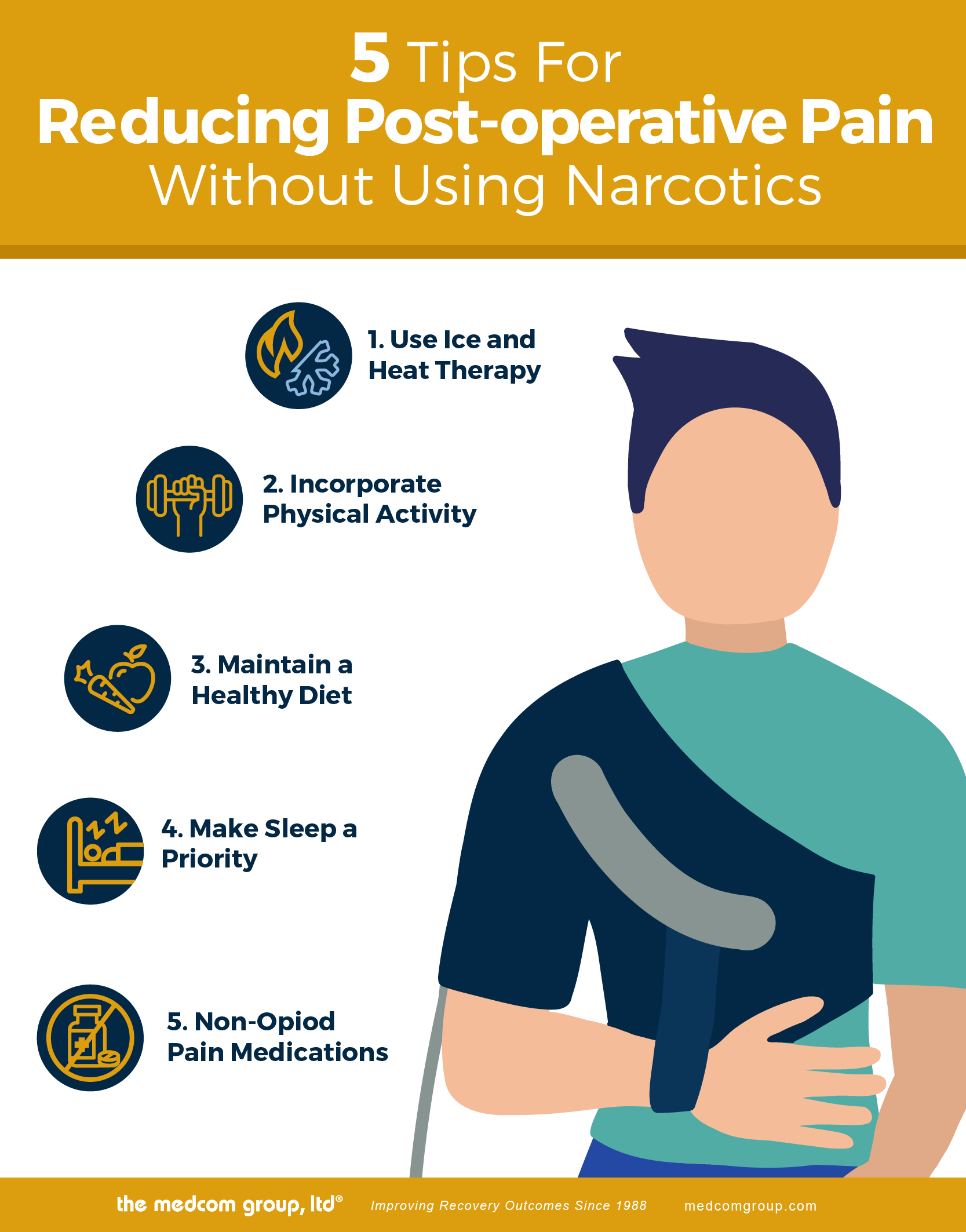5 Tips For Reducing Post-operative Pain Without Using Narcotics
16th Mar 2023

Narcotics were once seen as a simple solution for post-surgery pain because they worked fast and seemed low-risk. But growing concerns about addiction and dependence have made their use more controversial. This post shares five ways to manage post-op pain without relying on narcotics.
Why Avoid Narcotics?
Narcotics are not the right way to reduce postoperative pain because they can cause side effects such as drowsiness, confusion, and constipation. Additionally, they can be incredibly addictive to some, causing lifelong struggles.
Instead, non-narcotic pain medications such as ibuprofen, acetaminophen, and naproxen can reduce the pain without the extensive side effects. Other methods of managing postoperative pain work great as well, including ice and heat therapy, relaxation techniques, and physical therapy.
Tip 1: Use Ice and Heat Therapy
Ice and heat therapy can reduce postoperative pain by numbing the area with cold and increasing blood flow to the area with heat. Cold therapy can reduce swelling and reduce nerve conduction velocity, while heat can promote muscle relaxation and increase blood flow to the area.
Ice and heat therapy is preferable to narcotics because they are natural, non-invasive, and non-chemical. Additionally, ice and heat therapy can be combined with other treatments to help reduce pain more effectively.
We recommend using products like the NICE1 Cold/Compression Therapy and similar products in our line of cold/heat therapy systems.
Tip 2: Incorporate Physical Activity
Depending on the surgery, if you can walk after your procedure without it affecting your healing, get out and enjoy a light, 20-minute to one-hour walk at least once daily. For some patients, a “waterfall” approach to time spent walking can help. Start with a five-minute walk one day, then seven minutes, then nine, and so on. Please consult your healthcare professional to determine an exercise program that will work best for you.
If your body needs extra support while getting active, consider using a brace for added stability, protection, and strength. Staying physically active will help improve blood flow, which will help speed your recovery process when combined with other positive healing methods.
Sometimes, your surgical procedure may limit your ability to walk. In these cases, it is essential to avoid walking unless otherwise told by your healthcare professional. That being said, movement is still vital, as muscle movement encourages blood flow. Blood flow allows nutrients and fluid to be recycled, thereby preventing issues from developing due to extended immobility. If you’re concerned about your mobility, ask your doctor about a continuous passive motion (CPM) machine in order to stay healthy.
Tip 3: Use Electrotherapy to Disrupt Pain Signals
Electrotherapy offers a safe, non-drug option for managing post-operative pain. It works by sending mild electrical impulses through the skin to nerves and muscles, which helps interrupt pain signals before they reach the brain. This method +not only reduces pain but also improves circulation and helps relax tense muscles—key benefits during recovery.
Devices like TENS (Transcutaneous Electrical Nerve Stimulation) units are compact, easy to use, and adjustable based on your pain level. Some models are designed for home use, making them a practical part of your daily routine. You don’t need to sit still for hours or take additional medication—just apply the electrodes, set the intensity, and go about your day.
Electrotherapy won’t sedate you or slow you down. It offers targeted relief without the side effects tied to narcotics. For many recovering patients, it becomes a go-to tool for staying comfortable, mobile, and on track with rehab goals.
Tip 4: Use Sequential Compression Devices to Reduce Swelling and Pain
Swelling drives pain after surgery. Cut it down, and you feel better—faster. That’s where sequential compression devices (SCDs) come in. These machines use timed, pulsing pressure to move fluid out of the limbs and improve circulation. Better blood flow also supports healing and reduces the risk of complications like blood clots.
SCDs are simple to use at home. Slip on the sleeves, start the pump, and let the device do the work. Many patients find the gentle pressure soothing—like a massage that eases soreness and helps them move more comfortably. For post-op recovery, especially in the legs, this is one of the most effective drug-free tools you can use.
Tip 5: Use Non-Opioid Pain Medications
Non-narcotic pain medications that can reduce postoperative pain include non-steroidal anti-inflammatory drugs (NSAIDs) such as ibuprofen and naproxen, acetaminophen, and COX-2 inhibitors such as celecoxib.
Topical analgesics, lidocaine patches, and nerve blocks can also be used. Additionally, muscle relaxants, anticonvulsants, and antidepressants may be used to reduce postoperative pain.
Using non-narcotic pain medications is the best way to avoid the detrimental side effects of opioids. Always consult your healthcare professional before using any medications to avoid potential complications.
The Bottom Line
Although narcotic pain medications have traditionally been the frontrunner in reducing postoperative pain, many healthcare professionals are recommending patients switch to non-narcotic alternatives due to the rising opioid crisis.
Many people have chosen a non-narcotic approach to their recovery. With these five tips, you can rest easy knowing that you will be one step closer to a healthy recovery without the downsides of opioid use. If you would like to inquire about any of the products listed on our website, please contact us today.
Disclaimer: We are not a licensed healthcare provider. Consult with your healthcare professional before adhering to any tips on this page to avoid unnecessary complications or inhibitors to your healing process.
